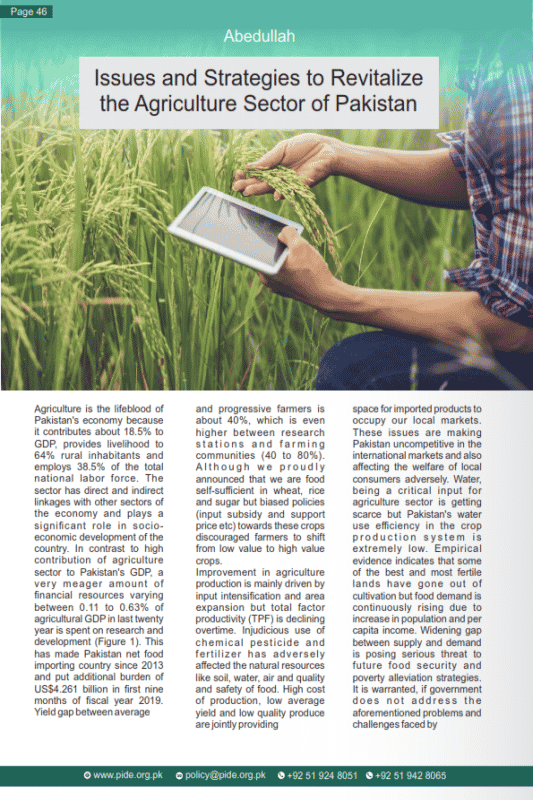Issues and Strategies to Revitalize the Agriculture Sector of Pakistan (P & R Vol.1 Issue 3)
Agriculture is the lifeblood of Pakistan’s economy because it contributes about 18.5% to GDP, provides livelihood to 64% rural inhabitants and employs 38.5% of the total national labor force. The sector has direct and indirect linkages with other sectors of the economy and plays a significant role in socioeconomic development of the country. In contrast to high contribution of agriculture sector to Pakistan’s GDP, a very meager amount of financial resources varying between 0.11 to 0.63% of agricultural GDP in last twenty year is spent on research and development (Figure 1). This has made Pakistan net food importing country since 2013 and put additional burden of US$4.261 billion in first nine months of fiscal year 2019. Yield gap between average and progressive farmers is about 40%, which is even higher between research s t a t i o n s a n d f a r m i n g communities (40 to 80%). A l t h o u g h w e p r o u d l y announced that we are food self-sufficient in wheat, rice and sugar but biased policies (input subsidy and support price etc) towards these crops discouraged farmers to shift from low value to high value crops.




